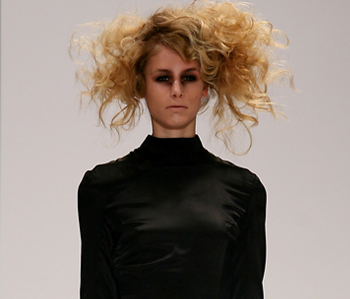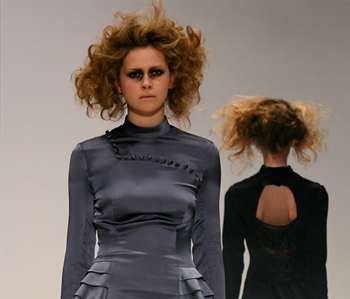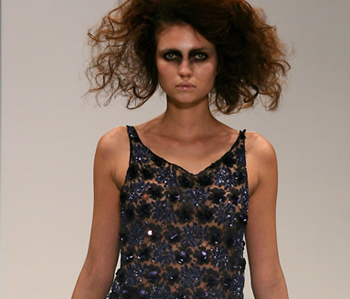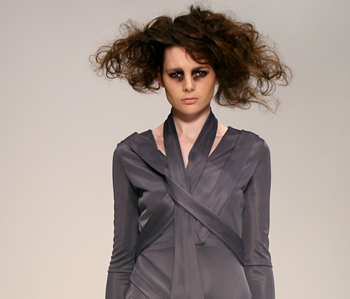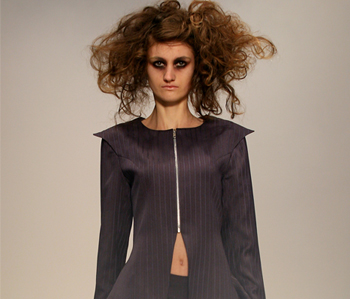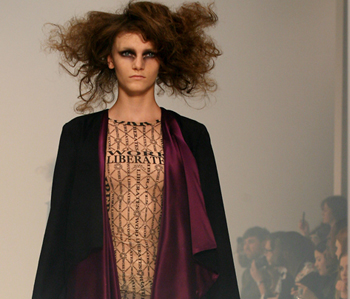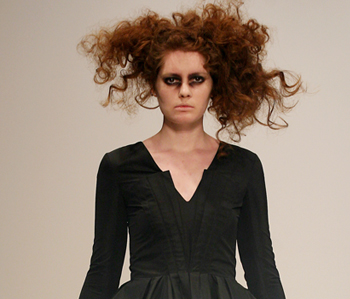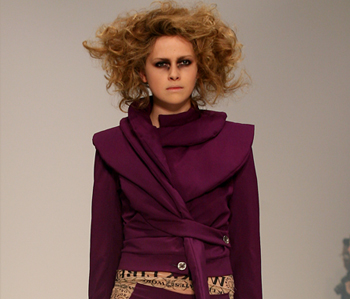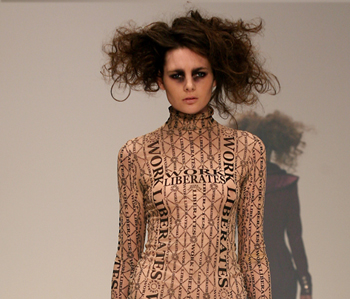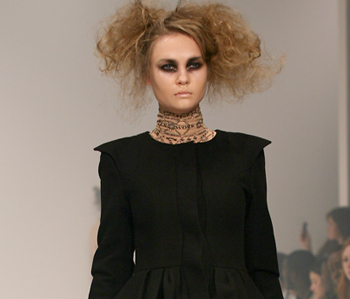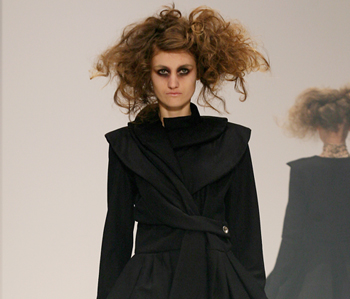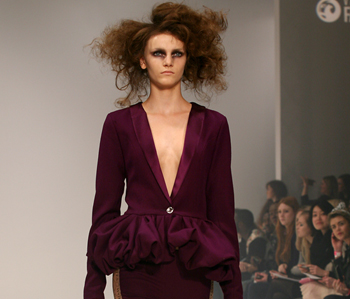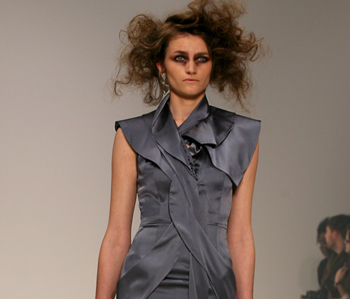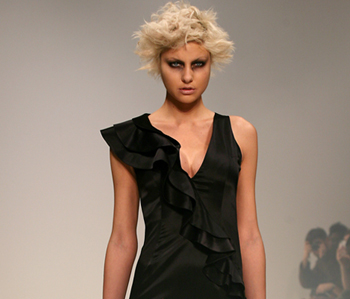Autumn - Winter 2012 - 13
"Work Liberates"
Carlotta Actis Barone is renowned for basing her collections on significant social issues. For Autumn/Winter 2012-13 her inspiration comes from the theme of the “Shoa”. Holocaust is a very current issue, not only because it is still vivid in our memory what happened during the Second World War, but also because nowadays the Holocaust is a pandemic phenomenon as there are exterminations all over the world. Vilified and persecuted people are portrayed and remembered through Carlotta’s clothes “ Wearing the offence to not forget it”. The motto “Arbeit macht frei” (Work Liberates), put on the Auschwitz camp gates, is the slogan that this season Carlotta prints on her bodysuits, dresses and leggings (hallmark of all her collections), shaped into a geometric pattern that imitates the model of Auschwitz gate. The Victims of the Holocaust, even in their tragedy, had hope and hope is a dream. Dreaming is not necessarily fantasizing about the impossible. In those conditions the dream was the past and the past was also the memory of the dignifying clothes they used to wear and that at the time represented normality against the nudity or the striped pigiamas they were forced into. So the dress is not experienced as something exceptional, but as something that dignified them in the position of individual human beings, the clothes was a protective skin of defence and honour. Carlotta therefore created a dress that covers from further abuse to protect a fragile reality. An important symbol of the Jewish culture, the Davis Star shape, is stretched along the body turning into ruffles or original patterns of intricate fabric panels that we find in most of the garments in flat or gathered form, big rigid asymmetric skirts and incisive “tails” on the back of some dresses. From the talled, or tallit, the characteristic cape used for praying (white with blue stripes) comes the shape of capes, long flowing evening gowns and ribbon details, inserted in most of the jackets, like an understated declaration of the right to pray. According to the Jewish religion and its vision on clothes all the garments are uncorrupted and cover the entire body, to recreate hope throughout the Jewish feminine features always so kind and composed. The colour palette is black, blue and purple. The choice of dark colours is to emphasize the seriousness of the theme and to keep the tone of sobriety necessary to remember these events.

